AirPods are one of Apple’s best products ever. They are useful, they work great, and the appeal is so universal that you see them everywhere. Almost six years ago, Apple announced AirPods Pro, adding noise cancellation and soft tips. Three years ago, Apple started selling AirPods Pro 2, which improved the sound, improved noise cancellation, improved battery life, and added Find My support for the case. A few days ago, Apple released the latest iteration: AirPods Pro 3 ($249 on Amazon). Once again, they improve upon all of the key features, including how they sound, noise cancellation, battery life, and more.
Design changes
On a quick look, you are unlikely to notice any design difference between the AirPods Pro 3 and the AirPods Pro 2. The case looks almost exactly the same. Only when side-by-side do you notice that the AirPods Pro 3 case is just slightly taller, and you cannot see the LED when it is turned off because it is hidden in the body of the case. In the next three pictures, the newer model is on the left.
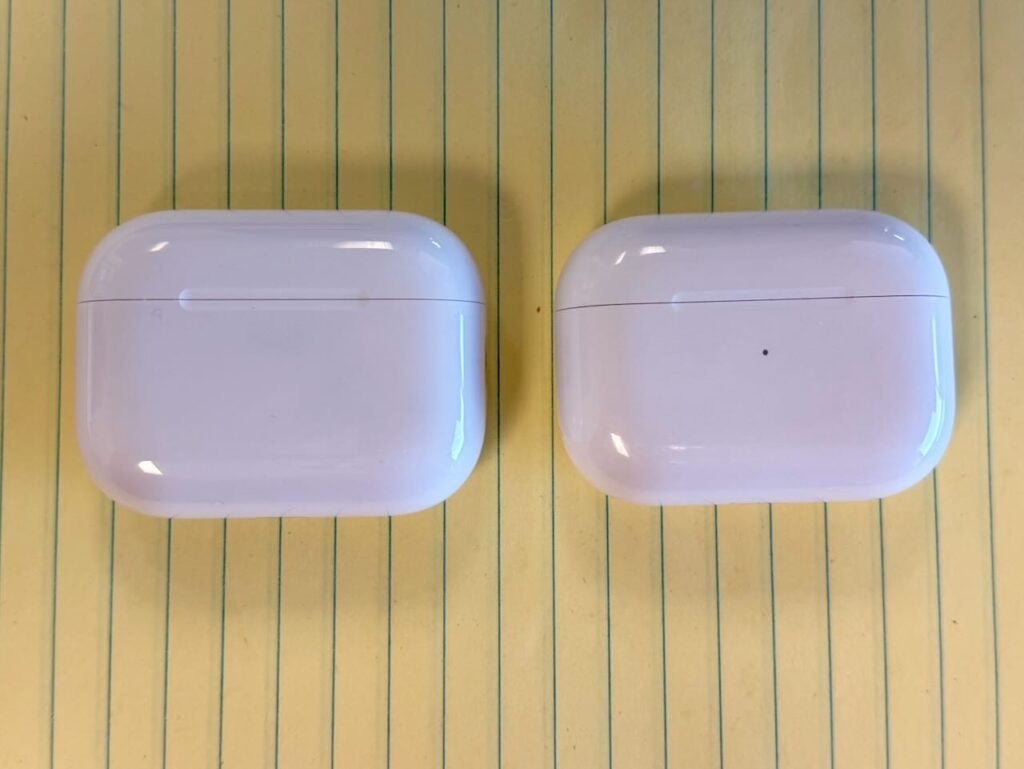
When the LED light is on, it is much brighter on the new model:
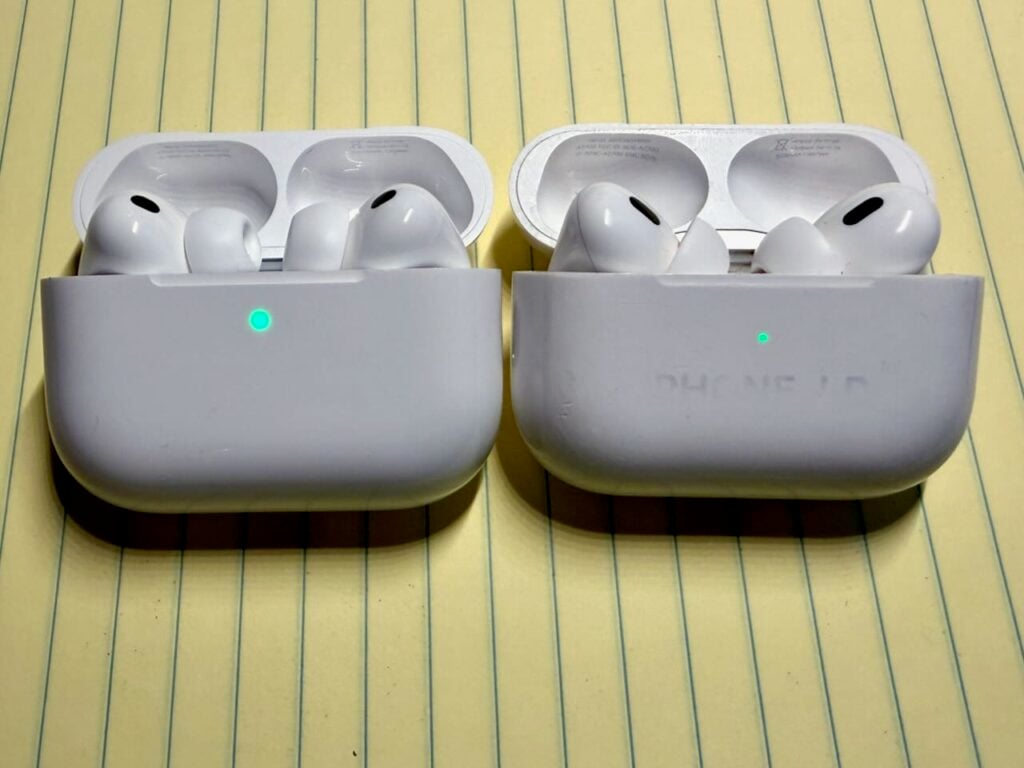
The back of the case has another slight difference: the back of the AirPods Pro 2 case has a button, used for Bluetooth pairing. With the AirPods Pro 3 case, you double-tap on the front of the case near the LED, while the AirPods are in the case, to enter pairing mode.
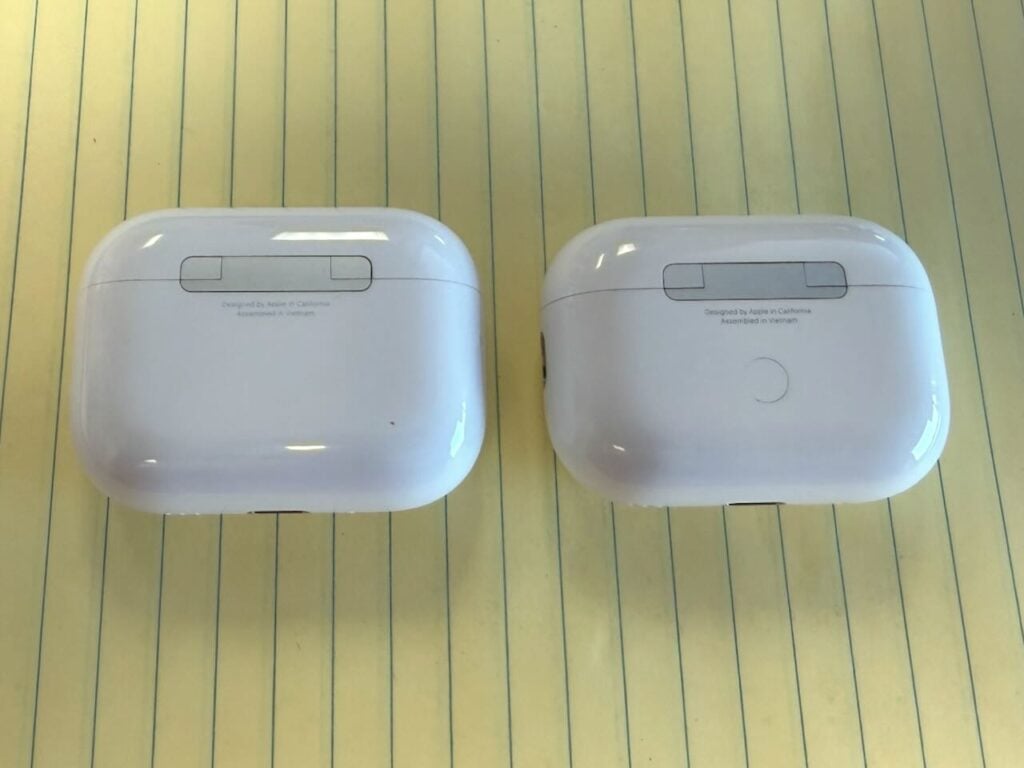
If you look at the AirPods Pro itself, you also might miss the difference between the 2 and the 3. There is a difference in the shape, but it is slight. In this picture, the newer model is on the right:

You can, however, notice in the above picture that the tip is smaller on the AirPods Pro 3. More on that below.
Where you really see the difference between the second and third-generation AirPods Pro is when you remove the tip. For the AirPods Pro 2, the speaker grill is flush against the device. For the AirPods Pro 3, the speaker is on a stem, so the sound goes deeper into your ear canal.
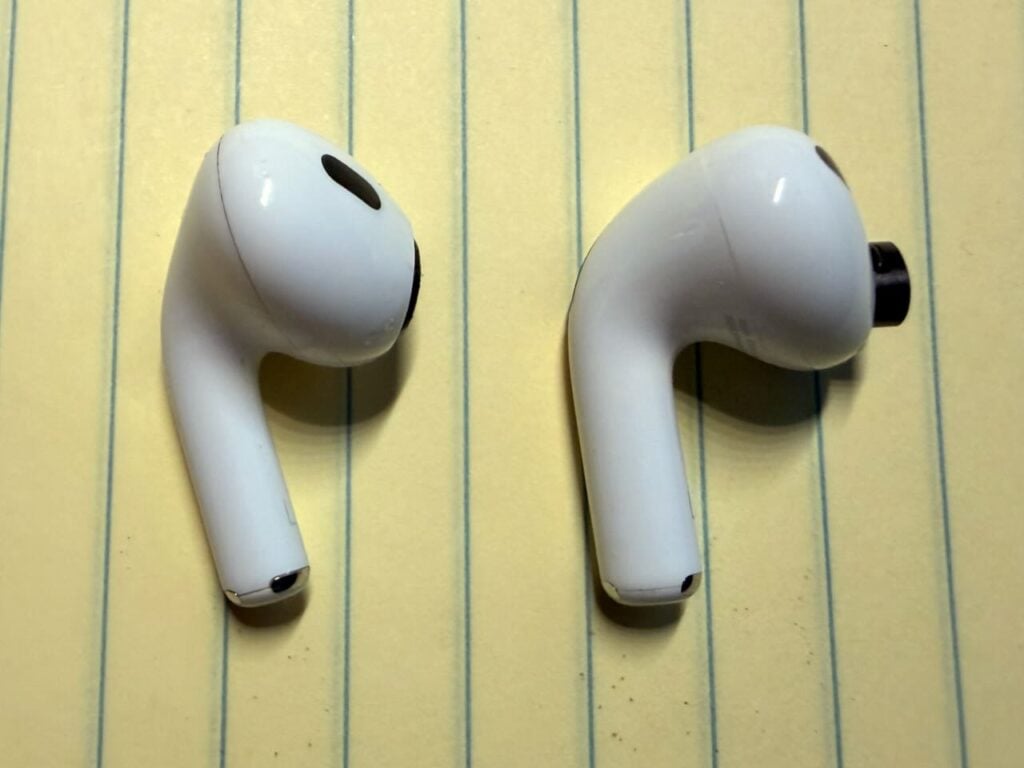
These design changes may seem slight, but when combined with updated internals, they make a meaningful difference. Here is how.
Better sound
You wear AirPods to listen to sound, so of course, you want the best sound quality possible. I’ve always thought that the AirPods Pro 2 sounded great. But when you go back and forth between the AirPods Pro 2 and the AirPods Pro 3, it is easy to tell that the sound quality has improved. I’m not sure if this is because of the new design (such as the longer stem with the spaker), new internals, or both.
For example, I’m a fan of the Bluegrass band AJ Lee & Blue Summit. They have a new EP coming out next month, and a few of the songs have been released early, such as the great song Glendale Train. As an acoustic song with strong individual performances, it is nice to hear crisp sound from each of the instruments. As good as that song sounds when I listen to it on my AirPods Pro 2, it sounds noticeably better on the AirPods Pro 3.
Apple has also improved the bass. When listening to a bass-heavy song, such as Boss Mode from Knife Party, you can feel and experience each bass drop more with the AirPods Pro 3.
Improved sound quality is, of course, a good thing. Having said that, I should mention that it was only when I went back and forth between the second and third generation models that I noticed the difference. They both sound really good; it’s just that one sounds slightly better. This is something to consider when you think about whether it is worth spending the money to upgrade.
Better noise cancellation
When the original AirPods Pro were released in 2019, the big new feature was active noise cancellation. Whether you were trying to avoid the white noise of airline travel or the sounds of downtown in a city, it was wonderful to have more focus on your music or a podcast. Three years later, Apple released the AirPods Pro 2, which Apple says had twice as much noise cancellation. This year, Apple says that AirPods Pro 3 have twice as much noise cancellation as AirPods Pro 2 (so 4x the noise cancellation of the original AirPods Pro).
I suspect that part of the improved noise cancellation comes from the longer speaker stem. Additionally, Apple is now using foam-infused ear tips for greater passive noise isolation. The foam is subtle, but it is there.
Just like the sound improvements, the noise cancellation improvements are most noticeable when you go back-and-forth between an older model and the AirPods Pro 3. I would not call it a dramatic improvement, but it is a noticeble improvement.
Better fit
As much as I have enjoyed the AirPods Pro and the AirPods Pro 2, I was never fully satisfied with the way that they fit my ears. As a result, for the last few years, I’ve gone back-and-forth between using the tips that came from Apple and third-party tips, such as the COMPLY Foam tips for the AirPods Pro ($19.99 on Amazon) in an attempt to find an improved fit.
The original AirPods Pro came with three different tip sizes: S, M, and L. The AirPods Pro 2 added a new size: XS. With the AirPods Pro 3, you get five different sizes. They come with M installed, and the other choices in the box are L, S, XS, and XXS.
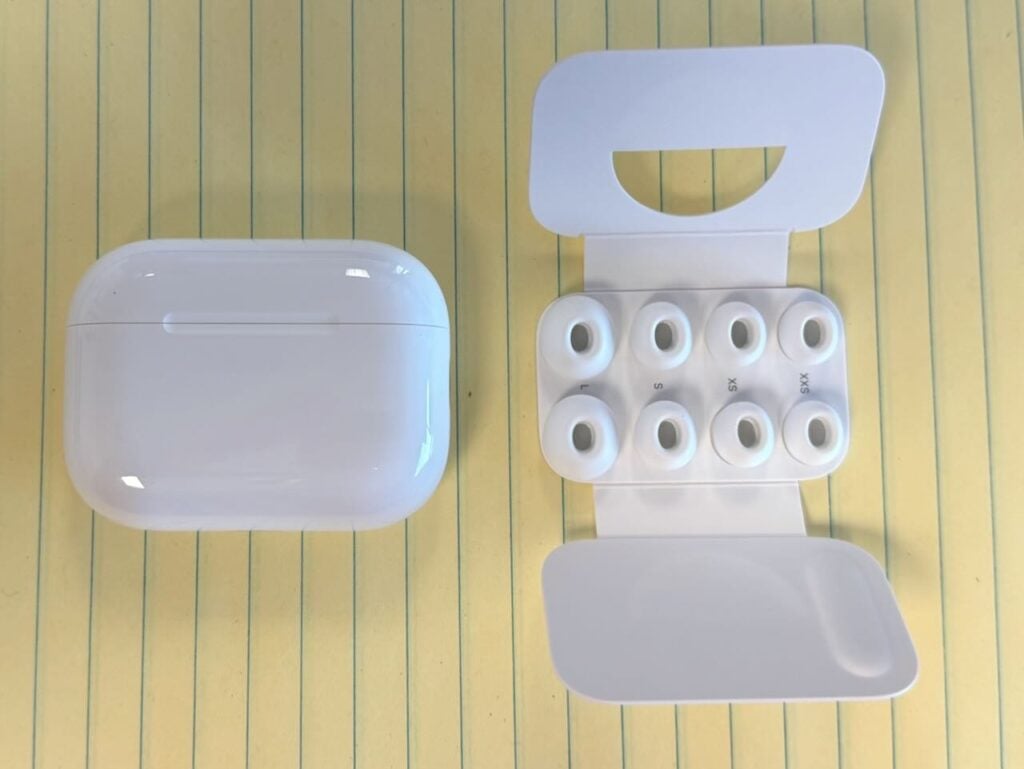
But the big news this year is not just that you get five sizes instead of four or three. What matters is that AirPods Pro 3 go a little deeper into your ear. As a result, you may want to go down a size. If you had been using the M size on AirPods Pro or AirPods Pro 2, I think you might prefer the S size on AirPods Pro 3. Additionally, I suspect that the foam-infused ear tips are adding to the increase in comfort.
On a past episode of the In the News podcast, my co-host Brett Burney mentioned that because every ear is different, some people have luck using a different tip size in each ear. That never made a difference for me with the AirPods Pro 2, but with the AirPods Pro 3, I have found that my best fit is to use the M size in my left ear and the L size in my right ear. It seems odd to do it that way, but this fit is excellent for me. This is the best that any AirPods model has ever fit me. I no longer have any desire to use a third-party ear tip. I realize that everyone has a different ear shape, so your results may vary, but Apple says that this new design fits more people than ever.
More battery life
I don’t just use my AirPods Pro when I am listening to music or podcasts. I also use them at work. If I am using them while taking a remote deposition via Zoom, I may be using my AirPods Pro 2 for eight hours straight, or more. And they don’t last that long. Apple says that they last up to six hours using active noise cancellation, and I suspect I get less than that. But the AirPods Pro 3 last 33% longer, so up to eight hours using active noise cancellation. That will be a nice change for me.
Note that there is a tradeoff on the battery life front. The case itself recharges AirPods Pro. With the AirPods Pro 2, it could recharge about four times, so a total of about 30 hours. With the AirPods Pro 3, it can recharge about three times, so a total of 24 hours of total listening time. I guess there are more electronics inside of the case, so there is less space for the battery. I don’t expect this to have any impact on me because I charge my case every night using a MagSafe charging stand next to my bed, plus I have another wireless charger in my office. I don’t believe that I have ever had the case for my AirPods run out of battery power. But you should be aware of this change, especially if it makes a difference to you based on how you use AirPods.
Better Find My
Although I try to keep my AirPods in my pocket as much as possible, sometimes I place them on a table, on the couch, or somewhere else. Which means that I sometimes lose them. I love that AirPods Pro 2 added the ability to use the Find My app to locate the case with the AirPods inside. But sometimes, I need to walk around the house quite a bit before I find myself in a room where my iPhone can sense the location of the AirPods Pro 2.
This feature is substantially improved with the AirPods Pro 3 because the MagSafe Charging Case contains the second generation of the Ultra Wideband chip. AirPods Pro 2 use the U1 chip. AirPods Pro 2 use U2. Thus, the new model reduces the risk that I still haven’t found what I’m looking for. (Sorry about that. I couldn’t resist.)
For example, in one test, I put my AirPods Pro 2 and my AirPods Pro 3 (in the cases) on the sofa in my living room. When I was two rooms away, my iPhone had no idea where the AirPods Pro 2 might be, so it just suggested that I move to a different location. But in the exact same spot, my iPhone only took a few seconds to figure out where the AirPods Pro 3 were located, telling me how far away they were and what direction I needed to go to find them. Bravo!
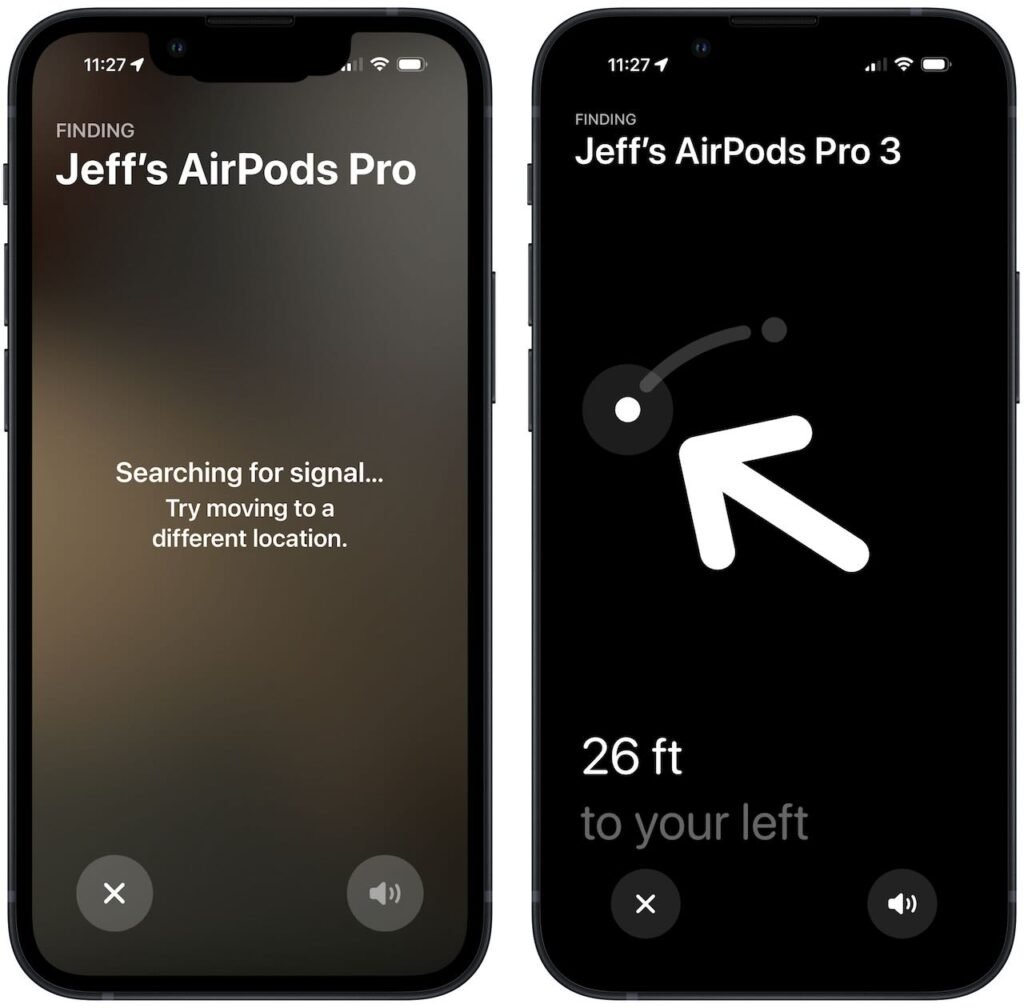
Heart rate sensor
Earlier this year, Apple released the Beats Powerbeats Pro 2 ($249 on Amazon), and it was the first earbud from Apple that could monitor your heart rate. AirPods Pro 3 have the same feature, but it seems to be executed in a better way. Ray Maker publishes the DC Rainmaker blog, where he has written about technology used by runners since 2007. He knows his stuff, and here is what he said about how this works in the AirPods Pro 3:
On the sides of the pods is a little black area, and under that are two infrared sensors that pulse light at 250 times per second. That’s notably different than the more standard green LEDs used in the PowerBeats 2 Pro (which didn’t work well). These infrared sensors look at the blood flow in your ears, and measure the movements of said blood. This data is then fed into a whole slate of algorithms, which attempt to figure out your heart rate, versus something like your thunking footsteps (which is typically what messes up HR sensors). In most cases, it’s the algorithms that are the magic for most companies.
How does it work? Maker ran numerous tests and concluded that it works quite well:
I’m blown away. Like, legit blown away. Not because Apple couldn’t do it, but because the PowerBeats 2 Pro were so bad (and only about 8 months ago), that I’d kinda written off Apple’s ability to get optical HR correct. Further, other companies recent attempts (e.g. Polar’s with Sennheiser), have also been pretty darn bad. All of which tracked with numerous other companies over the years trying, and failing, horrifically.
Apple has managed to do something that really nobody else has: Produce a pretty solid heart rate sensing device in your ears. It’s not absolutely perfect, but it’s really strong.
Many fitness apps, including Apple’s own Fitness app, monitor heart rate to evaluate the intensity of effort as you exercise. If you are working out with AirPods Pro 3, your heart rate can be monitored even if you are not wearing an Apple Watch.
But what if you are also wearing an Apple Watch? Conor Allison of Wareable interviewed Julz Arney, Apple’s Senior Director of Fitness Technologies and Fitness+, to ask this question. Her response: “When you have your AirPods in and you’re also tracking a workout with your Apple Watch, you have three streams of heart rate, so that we can arbitrate the best coverage for heart rate.” Thus, your iPhone can dynamically switch between your Apple Watch and your AirPods Pro 3 to try to get the most reliable reading.
I used my treadmill twice this past weekend, wearing both my Apple Watch Series 10 and the AirPods Pro 3. But I honestly have no idea if the heart rate readings were any more accurate because of these three streams of heart rate data. Hopefully, Apple is right that makes a difference.
On the other hand, if you like to workout while wearing AirPods and not wearing an Apple Watch, then this feature will be more important for you. And the data might also be interesting even if you are not explicitly working out. Eric Charles, Apple’s Senior Manager of Apple Watch Worldwide Product Marketing, told Conor Allison in that same interview: “We’ve really just opened the door for that customer—who may not have an Apple Watch—to learn a bit more about how something like listening to music on their daily walk can now all of a sudden be a workout.”
More dust, sweat, and water resistance
I’ve never encountered a problem with my AirPods not working because of sweat or rain, but I’ve heard reports of others occasionally having an issue with this. On the IP code scale (a measure of ingress protection), AirPods Pro 2 have a rating of IP54. The “4” indicates that they can withstand splashing of water. AirPods Pro 3 have a rating of IP57. The “7” indicates that they can withstand not only powerful water jets but even immersion in water up to a depth of 1 meter.
Does that mean that you could go swimming with AirPods Pro 3? Apple has a webpage devoted to AirPods sweat and water resistance. Apple explicitly says not to go swimming with the first-generation AirPods Pro or to submerge them. But they don’t say on that page to NOT go swimming with the AirPods Pro 3, and that page was last updated after AirPods Pro 3 were announced. On the other hand, Apple knows how to tell you that a product is waterproof and safe for swimming. They say that for the Apple Watch, but they don’t mention swimming with the AirPods Pro 3.
Moreover, there is a practical reason not to swim with AirPods Pro 3. They may not even work. Ray Maker tried it, and he found that as soon as AirPods Pro 3 touched the water, they lost the connection to his iPhone and he could no longer hear music.
Nevertheless, the fact that we are even talking about the possibility of going underwater thanks to the IP57 rating just goes to show you that this model is much more resistant to sweat and water. That’s a good thing.
Live translation
Before finishing this review, I want to mention the new live translation feature. This new feature of iOS 26 is not unique to the AirPods Pro 3. It also works with AirPods Pro 2 and the active noise cancellation model of AirPods 4.
To use this feature, open the Translate app on your iPhone and then tap the Live button. Your AirPods will then start to listen to another person speaking, and shortly after they say something in another language, you hear the same words in your native language through your AirPods. It currently works with English, French, German, Portuguese, and Spanish. Later this year, Apple says that it will add support for Chinese (Mandarin, Simplified), Chinese (Mandarin, Traditional), Japanese, Korean, and Italian.
My wife speaks Spanish (and I do not, although I do parlez a little bit of français), so I tried this feature while she was speaking Spanish to me. And it was pretty magical. Removing the language barrier is amazing.
If both parties to the conversation have AirPods and iPhones, this works both ways. If not, you can show the screen of your iPhone to the other person, and the Translate app will show on the screen the words you are saying with the translation underneath—a little awkward, but it does work.
I know that others like Google have had similar features in the past, but it is amazing to have this feature on the AirPods and iPhone. It makes me want to do some international travel right away.
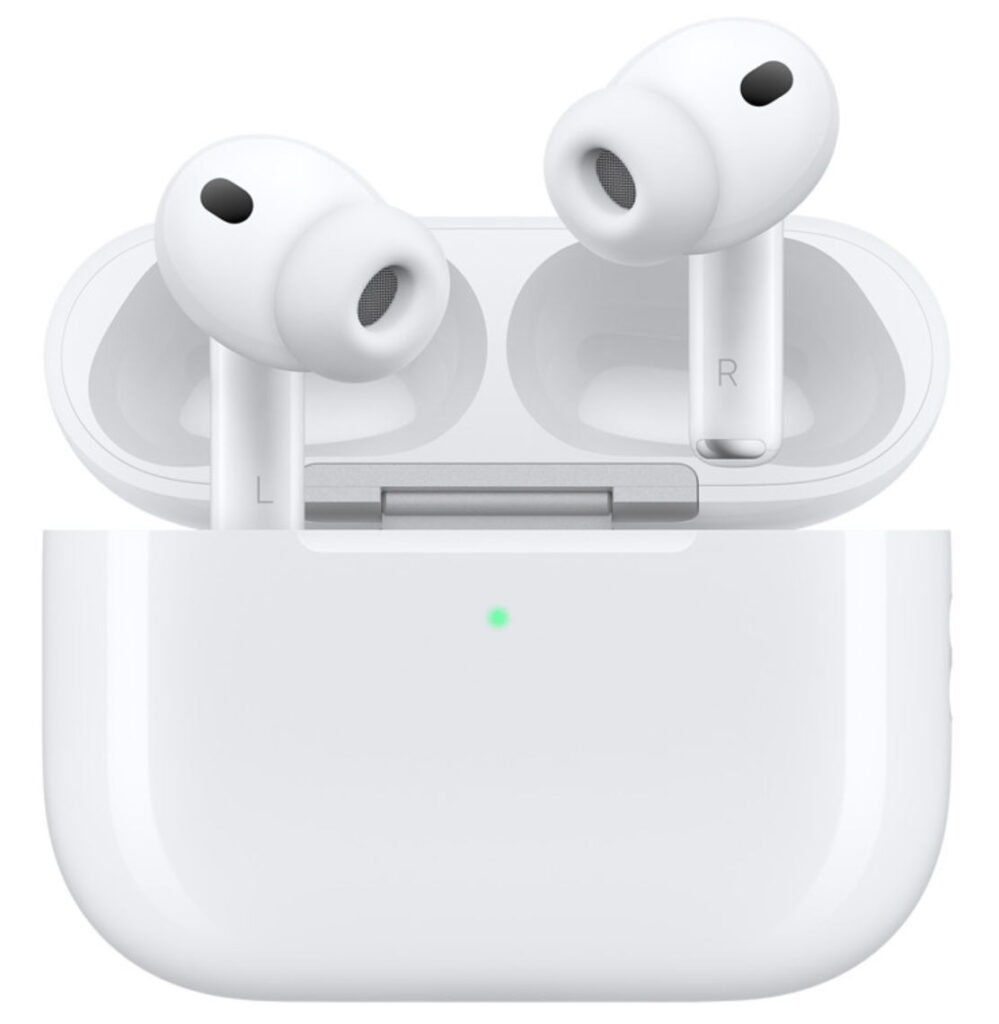
Conclusion
If you are using the first-generation AirPods Pro or a non-pro AirPods model, I think that AirPods Pro 3 is an incredible upgrade. You will get a big improvement in sound and noise cancellation, plus a large number of new and useful features.
If you are currently using AirPods Pro 2, the improvements are there, but it is not a major step up. Essentially, you get the same features you already had, such as great sound, noise cancellation, and Find My (especially if you already use an Apple Watch to monitor your heart rate while you exercise), but each feature works a little better, and they fit in your ears a little better.
So if it is only a little better, why did I spend the $249 to upgrade from the AirPods Pro 2 to the AirPods Pro 3? I did so because I use my AirPods every single day, both for work during videoconferences and phone calls and outside of work for music, podcasts, watching videos, and more. My guess it that this will be the top-of-the line model of the AirPods Pro for the next two or three years. Even if this new model is only a little bit better than what I had been using, that’s a little bit better in many different ways, every single day, for the next 730 to 1,095 days. I think that is worth the money. I’ve already enjoyed using these for the last few days, and I love that I have many, many more days to come with the AirPods Pro 3.

Basically a horrible review that screams paid ad. Best quality sound from airpods? That’s hilarious 😂😂😂
Sounds like you are not a fan of this product. It would be interesting if you could state what product you prefer and why.
The big knock that I hear about AirPods / AirPods Pro is not sound quality but instead is that, for some people, they don’t fit well in their ears. Apple tried to address that with this latest model, but of course there will never be any one product like this that is best for every ear shape. I’m not aware of any serious criticism of the sound quality of AirPods Pro 3 at this cost–and as I’m sure you have seen, the reviews of AirPods Pro 3 over the past week have been incredibly favorable. Of course, I’m sure that there are far more expensive products that will sound better for some people.
-Jeff
P.S. I promise to disclose if Apple ever pays me for a review!